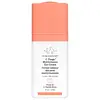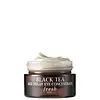What's inside
What's inside
 Key Ingredients
Key Ingredients

 Benefits
Benefits

 Concerns
Concerns

 Ingredients Side-by-side
Ingredients Side-by-side

Water
Skin ConditioningGlycerin
HumectantDicaprylyl Carbonate
EmollientCetearyl Alcohol
EmollientCaprylic/Capric Triglyceride
MaskingHydroxyethyl Acrylate/Sodium Acryloyldimethyl Taurate Copolymer
Emulsion StabilisingSodium Ascorbyl Phosphate
AntioxidantCetearyl Olivate
Sorbitan Olivate
EmulsifyingSclerocarya Birrea Seed Oil
HumectantPersea Gratissima Oil
Skin ConditioningPlukenetia Volubilis Seed Oil
EmollientMagnesium Ascorbyl Phosphate
AntioxidantCeteareth-6 Olivate
EmulsifyingTetrahexyldecyl Ascorbate
AntioxidantAscorbyl Glucoside
AntioxidantAscorbyl Palmitate
AntioxidantPalmitoyl Tripeptide-1
Skin ConditioningGlycine Soja Sterols
EmollientLinoleic Acid
CleansingPhospholipids
Skin ConditioningCeramide NP
Skin ConditioningGlycine Soja Protein
EmulsifyingCeramide AP
Skin ConditioningPhytosphingosine
Skin ConditioningCholesterol
EmollientCeramide EOP
Skin ConditioningCucumis Sativus Fruit Extract
EmollientCamellia Sinensis Leaf Extract
AntimicrobialPalmitoyl Dipeptide-5 Diaminobutyroyl Hydroxythreonine
Skin ConditioningPalmitoyl Dipeptide-5 Diaminohydroxybutyrate
Skin ConditioningDipeptide Diaminobutyroyl Benzylamide Diacetate
Skin ConditioningSodium Hyaluronate Crosspolymer
HumectantC12-15 Alkyl Benzoate
AntimicrobialPanthenol
Skin ConditioningDipotassium Glycyrrhizate
HumectantHesperidin Methyl Chalcone
AntioxidantDipeptide-2
Skin ConditioningPalmitoyl Tetrapeptide-7
Skin ConditioningFragaria Ananassa Seed Extract
AntioxidantMedicago Sativa Extract
TonicMorus Alba Leaf Extract
Skin ConditioningHydrolyzed Rice Protein
Skin ConditioningSpilanthes Acmella Flower Extract
Skin ConditioningAloe Barbadensis Leaf Juice
Skin ConditioningUbiquinone
AntioxidantSuperoxide Dismutase
AntioxidantPalmitoyl Tripeptide-38
Skin ConditioningAcetyl Hexapeptide-8
HumectantPyrus Malus Fruit Extract
Skin ConditioningPhytic Acid
Actinidia Chinensis Fruit Extract
EmollientVaccinium Myrtillus Leaf Extract
AstringentTocopherol
AntioxidantThioctic Acid
AntioxidantN-Hydroxysuccinimide
Skin ConditioningChrysin
Skin ConditioningMica
Cosmetic ColorantEthylhexyl Palmitate
EmollientPhenoxyethanol
PreservativePentylene Glycol
Skin ConditioningSodium Lauroyl Lactylate
EmulsifyingTitanium Dioxide
Cosmetic ColorantHydroxypropyl Cyclodextrin
MaskingSodium Benzoate
MaskingXanthan Gum
EmulsifyingCarbomer
Emulsion StabilisingTocopheryl Acetate
AntioxidantSodium Dextran Sulfate
Gel FormingSorbitan Isostearate
EmulsifyingCaprylyl Glycol
EmollientSteareth-20
CleansingChlorhexidine Digluconate
AntimicrobialCitric Acid
BufferingChlorphenesin
AntimicrobialPolysorbate 60
EmulsifyingPotassium Sorbate
PreservativeEthylhexylglycerin
Skin ConditioningWater, Glycerin, Dicaprylyl Carbonate, Cetearyl Alcohol, Caprylic/Capric Triglyceride, Hydroxyethyl Acrylate/Sodium Acryloyldimethyl Taurate Copolymer, Sodium Ascorbyl Phosphate, Cetearyl Olivate, Sorbitan Olivate, Sclerocarya Birrea Seed Oil, Persea Gratissima Oil, Plukenetia Volubilis Seed Oil, Magnesium Ascorbyl Phosphate, Ceteareth-6 Olivate, Tetrahexyldecyl Ascorbate, Ascorbyl Glucoside, Ascorbyl Palmitate, Palmitoyl Tripeptide-1, Glycine Soja Sterols, Linoleic Acid, Phospholipids, Ceramide NP, Glycine Soja Protein, Ceramide AP, Phytosphingosine, Cholesterol, Ceramide EOP, Cucumis Sativus Fruit Extract, Camellia Sinensis Leaf Extract, Palmitoyl Dipeptide-5 Diaminobutyroyl Hydroxythreonine, Palmitoyl Dipeptide-5 Diaminohydroxybutyrate, Dipeptide Diaminobutyroyl Benzylamide Diacetate, Sodium Hyaluronate Crosspolymer, C12-15 Alkyl Benzoate, Panthenol, Dipotassium Glycyrrhizate, Hesperidin Methyl Chalcone, Dipeptide-2, Palmitoyl Tetrapeptide-7, Fragaria Ananassa Seed Extract, Medicago Sativa Extract, Morus Alba Leaf Extract, Hydrolyzed Rice Protein, Spilanthes Acmella Flower Extract, Aloe Barbadensis Leaf Juice, Ubiquinone, Superoxide Dismutase, Palmitoyl Tripeptide-38, Acetyl Hexapeptide-8, Pyrus Malus Fruit Extract, Phytic Acid, Actinidia Chinensis Fruit Extract, Vaccinium Myrtillus Leaf Extract, Tocopherol, Thioctic Acid, N-Hydroxysuccinimide, Chrysin, Mica, Ethylhexyl Palmitate, Phenoxyethanol, Pentylene Glycol, Sodium Lauroyl Lactylate, Titanium Dioxide, Hydroxypropyl Cyclodextrin, Sodium Benzoate, Xanthan Gum, Carbomer, Tocopheryl Acetate, Sodium Dextran Sulfate, Sorbitan Isostearate, Caprylyl Glycol, Steareth-20, Chlorhexidine Digluconate, Citric Acid, Chlorphenesin, Polysorbate 60, Potassium Sorbate, Ethylhexylglycerin
Water
Skin ConditioningGlycerin
HumectantButylene Glycol
HumectantSqualane
EmollientPropylene Glycol Dicaprylate/Dicaprate
EmollientCaprylic/Capric Triglyceride
MaskingMethyl Methacrylate Crosspolymer
Pentylene Glycol
Skin ConditioningSteareth-21
CleansingCetyl Alcohol
EmollientStearyl Alcohol
EmollientC10-18 Triglycerides
EmollientLimnanthes Alba Seed Oil
Skin ConditioningSaccharomyces Ferment Filtrate
HumectantCamellia Sinensis Leaf Extract
AntimicrobialAvena Sativa Kernel Extract
AbrasiveMorinda Citrifolia Fruit Juice
Skin ConditioningSaccharomyces Cerevisiae Extract
Skin ConditioningLitchi Chinensis Seed Extract
Skin ConditioningRubus Fruticosus Leaf Extract
MaskingTocopheryl Acetate
AntioxidantAscorbyl Tetraisopalmitate
AntioxidantTocopherol
AntioxidantBiotin
AntiseborrhoeicGlyceryl Hydroxystearate
EmollientSteareth-2
EmulsifyingStearalkonium Hectorite
Gel FormingSodium Polyacrylate
AbsorbentParfum
MaskingDimethicone
EmollientSilica
AbrasivePropylene Carbonate
SolventAcrylates/C10-30 Alkyl Acrylate Crosspolymer
Emulsion StabilisingSodium Hyaluronate
HumectantMaltodextrin
AbsorbentTromethamine
BufferingAdenosine
Skin ConditioningCI 77891
Cosmetic ColorantBiosaccharide Gum-2
Skin ConditioningCaramel
Cosmetic ColorantHydroxyethylcellulose
Emulsion StabilisingAlgin
MaskingBHT
AntioxidantSodium Citrate
BufferingTin Oxide
AbrasiveAcacia Senegal Gum
MaskingCitric Acid
BufferingEthylhexylglycerin
Skin ConditioningPotassium Sorbate
PreservativeSerine
MaskingPhenoxyethanol
PreservativeLinalool
PerfumingWater, Glycerin, Butylene Glycol, Squalane, Propylene Glycol Dicaprylate/Dicaprate, Caprylic/Capric Triglyceride, Methyl Methacrylate Crosspolymer, Pentylene Glycol, Steareth-21, Cetyl Alcohol, Stearyl Alcohol, C10-18 Triglycerides, Limnanthes Alba Seed Oil, Saccharomyces Ferment Filtrate, Camellia Sinensis Leaf Extract, Avena Sativa Kernel Extract, Morinda Citrifolia Fruit Juice, Saccharomyces Cerevisiae Extract, Litchi Chinensis Seed Extract, Rubus Fruticosus Leaf Extract, Tocopheryl Acetate, Ascorbyl Tetraisopalmitate, Tocopherol, Biotin, Glyceryl Hydroxystearate, Steareth-2, Stearalkonium Hectorite, Sodium Polyacrylate, Parfum, Dimethicone, Silica, Propylene Carbonate, Acrylates/C10-30 Alkyl Acrylate Crosspolymer, Sodium Hyaluronate, Maltodextrin, Tromethamine, Adenosine, CI 77891, Biosaccharide Gum-2, Caramel, Hydroxyethylcellulose, Algin, BHT, Sodium Citrate, Tin Oxide, Acacia Senegal Gum, Citric Acid, Ethylhexylglycerin, Potassium Sorbate, Serine, Phenoxyethanol, Linalool
 Reviews
Reviews

Ingredients Explained
These ingredients are found in both products.
Ingredients higher up in an ingredient list are typically present in a larger amount.
Camellia Sinensis Leaf Extract is derived from the leaves of the tea plant. Black tea, green tea, and oolong tea are all harvested from this plant.
This ingredient has many skin benefits:
This ingredient contains polyphenols, a strong antioxidant. Antioxidants help fight off molecules that damage skin cells.
On top of that, the antioxidants in green tea neutralize free-radicals from the sun. This gives the skin some extra UV protection, but should not replace sunscreen.
Many components of tea have anti-inflammatory properties.
Polyphenols and L-theanine help soothe the skin and reduce irritation. The caffeine in Camellia Sinensis Leaf Extract helps calm inflamed blood vessels.
Other compounds found in tea include: Vitamin Bs, linoleic acid, magnesium, calcium, iron, and zinc.
Research has shown both drinking Camellia Sinensis Leaf Tea and applying it to the skin can help boost skin elasticity and hydration. Studies also show using tea extract may reduce sebum, or oil, production.
Learn more about Camellia Sinensis Leaf ExtractThis ingredient is an emollient, solvent, and texture enhancer. It is considered a skin-softener by helping the skin prevent moisture loss.
It helps thicken a product's formula and makes it easier to spread by dissolving clumping compounds.
Caprylic Triglyceride is made by combining glycerin with coconut oil, forming a clear liquid.
While there is an assumption Caprylic Triglyceride can clog pores due to it being derived from coconut oil, there is no research supporting this.
Learn more about Caprylic/Capric TriglycerideCitric Acid is an alpha hydroxy acid (AHA) naturally found in citrus fruits like oranges, lemons, and limes.
Like other AHAs, citric acid can exfoliate skin by breaking down the bonds that hold dead skin cells together. This helps reveal smoother and brighter skin underneath.
However, this exfoliating effect only happens at high concentrations (20%) which can be hard to find in cosmetic products.
Due to this, citric acid is usually included in small amounts as a pH adjuster. This helps keep products slightly more acidic and compatible with skin's natural pH.
In skincare formulas, citric acid can:
While it can provide some skin benefits, research shows lactic acid and glycolic acid are generally more effective and less irritating exfoliants.
Most citric acid used in skincare today is made by fermenting sugars (usually from molasses). This synthetic version is identical to the natural citrus form but easier to stabilize and use in formulations.
Read more about some other popular AHA's here:
Learn more about Citric AcidEthylhexylglycerin (we can't pronounce this either) is commonly used as a preservative and skin softener. It is derived from glyceryl.
You might see Ethylhexylglycerin often paired with other preservatives such as phenoxyethanol. Ethylhexylglycerin has been found to increase the effectiveness of these other preservatives.
Glycerin is already naturally found in your skin. It helps moisturize and protect your skin.
A study from 2016 found glycerin to be more effective as a humectant than AHAs and hyaluronic acid.
As a humectant, it helps the skin stay hydrated by pulling moisture to your skin. The low molecular weight of glycerin allows it to pull moisture into the deeper layers of your skin.
Hydrated skin improves your skin barrier; Your skin barrier helps protect against irritants and bacteria.
Glycerin has also been found to have antimicrobial and antiviral properties. Due to these properties, glycerin is often used in wound and burn treatments.
In cosmetics, glycerin is usually derived from plants such as soybean or palm. However, it can also be sourced from animals, such as tallow or animal fat.
This ingredient is organic, colorless, odorless, and non-toxic.
Glycerin is the name for this ingredient in American English. British English uses Glycerol/Glycerine.
Learn more about GlycerinPentylene glycol is typically used within a product to thicken it. It also adds a smooth, soft, and moisturizing feel to the product. It is naturally found in plants such as sugar beets.
The hydrophilic trait of Pentylene Glycol makes it a humectant. As a humectant, Pentylene Glycol helps draw moisture from the air to your skin. This can help keep your skin hydrated.
This property also makes Pentylene Glycol a great texture enhancer. It can also help thicken or stabilize a product.
Pentylene Glycol also acts as a mild preservative and helps to keep a product microbe-free.
Some people may experience mild eye and skin irritation from Pentylene Glycol. We always recommend speaking with a professional about using this ingredient in your routine.
Pentylene Glycol has a low molecular weight and is part of the 1,2-glycol family.
Learn more about Pentylene GlycolPhenoxyethanol is a preservative that has germicide, antimicrobial, and aromatic properties. Studies show that phenoxyethanol can prevent microbial growth. By itself, it has a scent that is similar to that of a rose.
It's often used in formulations along with Caprylyl Glycol to preserve the shelf life of products.
Potassium Sorbate is a preservative used to prevent yeast and mold in products. It is commonly found in both cosmetic and food products.
This ingredient comes from potassium salt derived from sorbic acid. Sorbic acid is a natural antibiotic and effective against fungus.
Both potassium sorbate and sorbic acid can be found in baked goods, cheeses, dried meats, dried fruit, ice cream, pickles, wine, yogurt, and more.
You'll often find this ingredient used with other preservatives.
Learn more about Potassium SorbateTocopherol (also known as Vitamin E) is a common antioxidant used to help protect the skin from free-radicals and strengthen the skin barrier. It's also fat soluble - this means our skin is great at absorbing it.
Vitamin E also helps keep your natural skin lipids healthy. Your lipid skin barrier naturally consists of lipids, ceramides, and fatty acids. Vitamin E offers extra protection for your skin’s lipid barrier, keeping your skin healthy and nourished.
Another benefit is a bit of UV protection. Vitamin E helps reduce the damage caused by UVB rays. (It should not replace your sunscreen). Combining it with Vitamin C can decrease sunburned cells and hyperpigmentation after UV exposure.
You might have noticed Vitamin E + C often paired together. This is because it is great at stabilizing Vitamin C. Using the two together helps increase the effectiveness of both ingredients.
There are often claims that Vitamin E can reduce/prevent scarring, but these claims haven't been confirmed by scientific research.
Learn more about TocopherolTocopheryl Acetate is AKA Vitamin E. It is an antioxidant and protects your skin from free radicals. Free radicals damage the skin by breaking down collagen.
One study found using Tocopheryl Acetate with Vitamin C decreased the number of sunburned cells.
Tocopheryl Acetate is commonly found in both skincare and dietary supplements.
Learn more about Tocopheryl AcetateWater. It's the most common cosmetic ingredient of all. You'll usually see it at the top of ingredient lists, meaning that it makes up the largest part of the product.
So why is it so popular? Water most often acts as a solvent - this means that it helps dissolve other ingredients into the formulation.
You'll also recognize water as that liquid we all need to stay alive. If you see this, drink a glass of water. Stay hydrated!
Learn more about Water